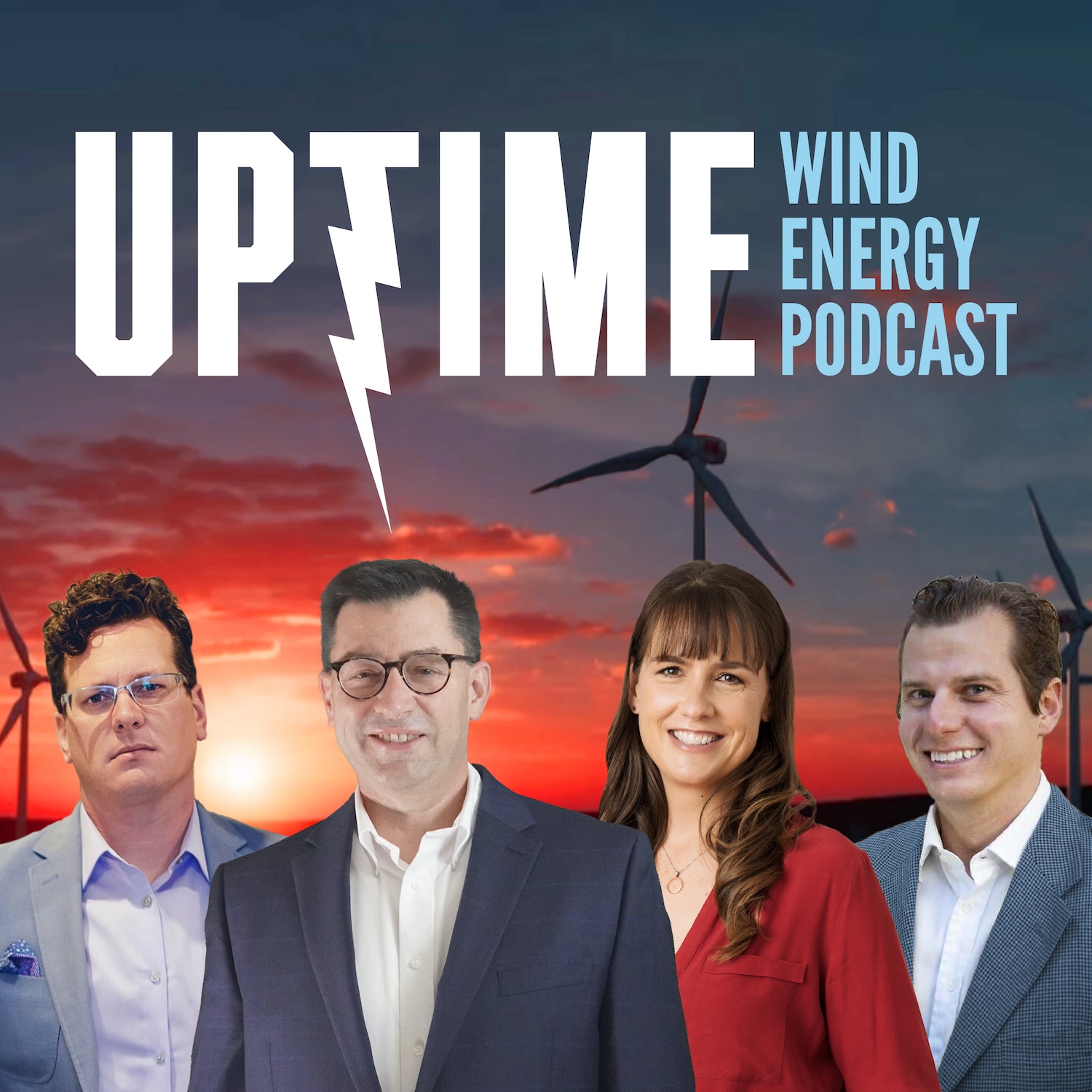GE Cypress Blade Tip Swap-out, Vestas Load Probability Control Method
Description
This week on Uptime Power-Up, a method from Vestas for modifying control of a wind turbine using load probability, a blade tip swap-out for Cypress turbines from GE, and a wind turbine tower with solar panels installed.
Sign up now for Uptime Tech News, our weekly email update on all things wind technology. This episode is sponsored by Weather Guard Lightning Tech. Learn more about Weather Guard's StrikeTape Wind Turbine LPS retrofit. Follow the show on Facebook, YouTube, Twitter, Linkedin and visit Weather Guard on the web. And subscribe to Rosemary Barnes' YouTube channel here. Have a question we can answer on the show? Email us!
Pardalote Consulting - https://www.pardaloteconsulting.comWeather Guard Lightning Tech - www.weatherguardwind.comIntelstor - https://www.intelstor.comWind Energy O&M Australia Conference - https://www.windaustralia.com
Allen Hall: Welcome to Power Up, the Uptime podcast focused on the new, hot off the press technology that can change the world. Follow along with me, Alan Hall, and idasaur's Phil Totaro, as we discuss the weird, the wild, and the game changing ideas that will charge your energy future.
Well, our first idea is from Vestas, and it is an idea where they're monitoring the Turbine tower loads for natural vibration frequency, and you say, well, why would you want to do that? Well, of course, as things change on a wind turbine, maybe something goes wrong. Those frequencies of vibration are going to change, and the system will detect those and say, hey, something is wrong.
Here's probably what it is, which is a smart way of detecting failure modes in the turbine fill. But the other thing it could do, is push the turbine harder if it's not being driven hard enough and creating enough power.
Philip Totaro: Yeah, and this is actually really fascinating because, again, this might not sound like the world's most revolutionary, innovation, but it's a practical solution to a challenge that is faced out there in the field when you're operating a wind farm.
And specifically, in addition to just monitoring the, the tower loads and vibration over time, they have the option to monitor the max extreme load in relation to the original design load limit and readjust that max extreme load value over time as there's an evolution of the, the.
Mechanical performance of, of the turbine. And that to me is, is really clever way of approaching this challenge of having additional safety factor. Or as we see in the United States where turbines get run a lot harder. Than they were potentially designed for. Sometimes because companies are trying to maximize their production tax, credit revenue.
This is a way for a company like Vestus to keep an eye on whether or not they're exceeding a. Safety criteria, or by how much are you exceeding a safety criteria of,
More Episodes
Allen Hall and Joel Saxum talk with Cory Mittleider from Malloy Wind about the complex world of wind turbine main bearings. Cory breaks down why traditional bearing coatings are failing in newer turbine models and explores how electrical discharge, material choices, and monitoring systems play...
Published 11/21/24
Published 11/21/24
This week on Uptime Power-Up we discuss Vestas' offshore blade repair method, Siemens Gamesa's way of optimizing power production for floating turbines, and a fun way for kid's to collect their Halloween candy.
ign up now for Uptime Tech News, our weekly email update on all things wind...
Published 11/20/24


